Instruction
Three post-round stretches for your lower back
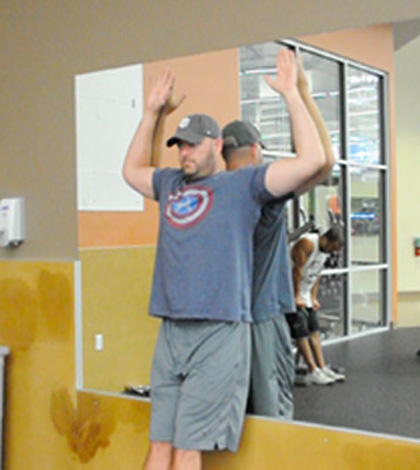
A round of golf is often enjoyable, but for many golfers lower back pain creeps in on the back nine. A good afternoon turns in to a struggle to finish your round. Even worse, low back discomfort will disrupt your consistency and ultimately drive your score up.
I call this the dreaded “Back Nine Fade.”
When you are tired or aching, it’s hard to deliver a consistent strike to the golf ball. Low back pain can be caused by a combination of a weak core, tight muscles and even overly strong muscles. A sedentary lifestyle (sitting at a desk all day) is most likely the cause of most golfers’ problems.
While some back issues require chiropractic care or surgery to alleviate pain, most low back pain can be fixed during the course of a few months. Performing the proper exercises, stretches and mobility drills can help bullet-proof your low back. However, be sure you talk to your doctor or chiropractor before performing any sort of physical exercise routine.
The best place to begin bullet-proofing your low back is by implementing an “after round” stretch to provide relief from stiff muscles. Not only will you get instant relief from the stiffness, you will actually be performing preventative maintenance.
It’s important to note that stretching is just one part of the total equation.
Proper Stretches + Proper Strength Training = Healthy Low Back
While the stretches (provided later in this article) will get you standing up straight after a long day on the links, you need to consider adding a consistent core fitness routine. In fact, Dr. Stuart McGill suggests that people who are able to hold a plank for two minutes are much less likely to experience any type of back pain.
Although we don’t cover a core strengthening program in this article, I felt it necessary to suggest it along with the following after round stretching program below.
The following routine can be done in the locker room or when you get back to your home. I recommend doing these exercises once you get home because driving home might cause your low back to tighten up again. Besides, doing a downward dog in the 19th hole won’t win you any friends.
Top three stretches to do AFTER your round of golf:
- Butterfly stretch for 60 seconds
- Downward dog for 60 seconds
- Kneeling hip flexor for 60 seconds
Bonus Stretch
- Backswing angel for 60 seconds
Perform the above circuit with no rest between stretches. Repeat if you wish or are feeling extra tight.
Butterfly Stretch
- Sit on the floor with knees bent and feet together.
- Hold your toes down with your hands.
- Tuck your chin and pull your forehead toward your toes.
- Feel your groin, but put emphasis on your lower back.
- Hold for a count of eight.
- Repeat for required number of sets.
Downward Dog
Really focus on calf muscles and try to get heels to touch floor. This may take time, but is integral in helping to create more power, length and tension in your swing.
- Come to your hands and knees with the wrists underneath the shoulders and knees underneath the hips.
- Next, curl the toes under and push back raising the hips and straightening the legs.
- Spread the fingers and ground down from the forearms into the fingertips.
- Outwardly rotate the upper arms broadening the collarbones.
- Let the head hang, move the shoulder blades away from the ears toward the hips.
- Engage the quadriceps strongly to take the weight off the arms, making this a resting pose.
- Rotate the thighs inward, keep the tail high and sink your heels towards the floor.
Kneeling Hip Flexor
Tight hip flexors cause bad backs, monkey butts and athletic inferiority. When flexors are tight, they do not allow your glutes (strongest muscle in the body) to exert themselves efficiently.
- Kneel on floor and face forward.
- Your torso and front shin should remain upright for the duration of the stretch and hips should remain squared.
- Flex your abs to protect your back.
- Once the tension is released you will begin to sag down.
Let’s take this a step further so you can see how this can impact your backswing.
- Leaning forward, place your hands on your knee not letting your knee drift forward.
- Begin to twist and look out, do not look down.
Backswing Angel
Muscles: Rhomboids (upper back), posterior deltoids (shoulders)
- Stand with your back against a wall. Your feet should be six inches away from the wall and your butt, upper back and head should all be in contact with the wall at all times in the exercise.
- Stick your hands up overhead. Try to keep your shoulders, elbows and wrists in contact with the wall at all times.
- Slide your arms down the wall and tuck your elbows into your sides. This should bring your shoulder blades down and together. You should feel a strong contraction in the muscles between your shoulder blades as well as the shoulder muscles.
- Again, try to keep everything in contact with the wall.
- From the bottom position, try to slowly slide your arms up until they are straight and in a “stick-em up” position. Again, try to keep everything in contact with the wall.
- Try to improve your range of motion in this exercise each week.
- The goal is to improve shoulder mobility and postural control.
TIP: This exercise can also be performed laying flat on your back on the ground. It might be easier for you to start on your back at first and work up to the standing version.
Give this routine a try and please post a comment. I would love to hear from you and if these stretches helped you. In addition, feel free to suggest stretches or exercise that have helped minimize or eliminate your low back pain.
- LIKE7
- LEGIT16
- WOW2
- LOL1
- IDHT3
- FLOP0
- OB1
- SHANK0
Instruction
The Wedge Guy: The easiest-to-learn golf basic

My golf learning began with this simple fact – if you don’t have a fundamentally sound hold on the golf club, it is practically impossible for your body to execute a fundamentally sound golf swing. I’m still a big believer that the golf swing is much easier to execute if you begin with the proper hold on the club.
As you might imagine, I come into contact with hundreds of golfers of all skill levels. And it is very rare to see a good player with a bad hold on the golf club. There are some exceptions, for sure, but they are very few and very far between, and they typically have beat so many balls with their poor grip that they’ve found a way to work around it.
The reality of biophysics is that the body moves only in certain ways – and the particulars of the way you hold the golf club can totally prevent a sound swing motion that allows the club to release properly through the impact zone. The wonderful thing is that anyone can learn how to put a fundamentally sound hold on the golf club, and you can practice it anywhere your hands are not otherwise engaged, like watching TV or just sitting and relaxing.
Whether you prefer an overlap, interlock or full-finger (not baseball!) grip on the club, the same fundamentals apply. Here are the major grip faults I see most often, in the order of the frequency:
Mis-aligned hands
By this I mean that the palms of the two hands are not parallel to each other. Too many golfers have a weak left hand and strong right, or vice versa. The easiest way to learn how to hold the club with your palms aligned properly is to grip a plain wooden ruler or yardstick. It forces the hands to align properly and shows you how that feels. If you grip and re-grip a yardstick several times, then grip a club, you’ll see that the learning curve is almost immediate.
The position of the grip in the upper/left hand
I also observe many golfers who have the butt of the grip too far into the heel pad of the upper hand (the left hand for right-handed players). It’s amazing how much easier it is to release the club through the ball if even 1/4-1/2″ of the butt is beyond the left heel pad. Try this yourself to see what I mean. Swing the club freely with just your left hand and notice the difference in its release from when you hold it at the end of the grip, versus gripping down even a half inch.
To help you really understand how this works, go to the range and hit shots with your five-iron gripped down a full inch to make the club the same length as your seven-iron. You will probably see an amazing shot shape difference, and likely not see as much distance loss as you would expect.
Too much lower (right) hand on the club
It seems like almost all golfers of 8-10 handicap or higher have the club too far into the palm of the lower hand, because that feels “good” if you are trying to control the path of the clubhead to the ball. But the golf swing is not an effort to hit at the ball – it is a swing of the club. The proper hold on the club has the grip underneath the pad at the base of the fingers. This will likely feel “weak” to you — like you cannot control the club like that. EXACTLY. You should not be trying to control the club with your lower/master hand.
Gripping too tightly
Nearly all golfers hold the club too tightly, which tenses up the forearms and prevents a proper release of the club through impact. In order for the club to move back and through properly, you must feel that the club is controlled by the last three fingers of the upper hand, and the middle two fingers of the lower hand. If you engage your thumbs and forefingers in “holding” the club, the result will almost always be a grip that is too tight. Try this for yourself. Hold the club in your upper hand only, and squeeze firmly with just the last three fingers, with the forefinger and thumb off the club entirely. You have good control, but your forearms are not tense. Then begin to squeeze down with your thumb and forefinger and observe the tensing of the entire forearm. This is the way we are made, so the key to preventing tenseness in the arms is to hold the club very lightly with the “pinchers” — the thumbs and forefingers.
So, those are what I believe are the four fundamentals of a good grip. Anyone can learn them in their home or office very quickly. There is no easier way to improve your ball striking consistency and add distance than giving more attention to the way you hold the golf club.
More from the Wedge Guy
- The Wedge Guy: Golf mastery begins with your wedge game
- The Wedge Guy: Why golf is 20 times harder than brain surgery
- The Wedge Guy: Musings on the golf ball rollback
- LIKE85
- LEGIT13
- WOW6
- LOL1
- IDHT0
- FLOP4
- OB1
- SHANK8
Instruction
Clement: Stop ripping off your swing with this drill!

Not the dreaded headcover under the armpit drill! As if your body is defective and can’t function by itself! Have you seen how incredible the human machine is with all the incredible feats of agility all kinds of athletes are accomplishing? You think your body is so defective (the good Lord is laughing his head off at you) that it needs a headcover tucked under the armpit so you can swing like T-Rex?
- LIKE0
- LEGIT2
- WOW2
- LOL0
- IDHT0
- FLOP0
- OB0
- SHANK2
Instruction
How a towel can fix your golf swing

This is a classic drill that has been used for decades. However, the world of marketed training aids has grown so much during that time that this simple practice has been virtually forgotten. Because why teach people how to play golf using everyday items when you can create and sell a product that reinforces the same thing? Nevertheless, I am here to give you helpful advice without running to the nearest Edwin Watts or adding something to your Amazon cart.
For the “scoring clubs,” having a solid connection between the arms and body during the swing, especially through impact, is paramount to creating long-lasting consistency. And keeping that connection throughout the swing helps rotate the shoulders more to generate more power to help you hit it farther. So, how does this drill work, and what will your game benefit from it? Well, let’s get into it.
Setup
You can use this for basic chip shots up to complete swings. I use this with every club in my bag, up to a 9 or 8-iron. It’s natural to create incrementally more separation between the arms and body as you progress up the set. So doing this with a high iron or a wood is not recommended.
While you set up to hit a ball, simply tuck the towel underneath both armpits. The length of the towel will determine how tight it will be across your chest but don’t make it so loose that it gets in the way of your vision. After both sides are tucked, make some focused swings, keeping both arms firmly connected to the body during the backswing and follow through. (Note: It’s normal to lose connection on your lead arm during your finishing pose.) When you’re ready, put a ball in the way of those swings and get to work.

Get a Better Shoulder Turn
Many of us struggle to have proper shoulder rotation in our golf swing, especially during long layoffs. Making a swing that is all arms and no shoulders is a surefire way to have less control with wedges and less distance with full swings. Notice how I can get in a similar-looking position in both 60° wedge photos. However, one is weak and uncontrollable, while the other is strong and connected. One allows me to use my larger muscles to create my swing, and one doesn’t. The follow-through is another critical point where having a good connection, as well as solid shoulder rotation, is a must. This drill is great for those who tend to have a “chicken wing” form in their lead arm, which happens when it becomes separated from the body through impact.
In full swings, getting your shoulders to rotate in your golf swing is a great way to reinforce proper weight distribution. If your swing is all arms, it’s much harder to get your weight to naturally shift to the inside part of your trail foot in the backswing. Sure, you could make the mistake of “sliding” to get weight on your back foot, but that doesn’t fix the issue. You must turn into your trial leg to generate power. Additionally, look at the difference in separation between my hands and my head in the 8-iron examples. The green picture has more separation and has my hands lower. This will help me lessen my angle of attack and make it easier to hit the inside part of the golf ball, rather than the over-the-top move that the other picture produces.


Stay Better Connected in the Backswing
When you don’t keep everything in your upper body working as one, getting to a good spot at the top of your swing is very hard to do. It would take impeccable timing along with great hand-eye coordination to hit quality shots with any sort of regularity if the arms are working separately from the body.
Notice in the red pictures of both my 60-degree wedge and 8-iron how high my hands are and the fact you can clearly see my shoulder through the gap in my arms. That has happened because the right arm, just above my elbow, has become totally disconnected from my body. That separation causes me to lift my hands as well as lose some of the extension in my left arm. This has been corrected in the green pictures by using this drill to reinforce that connection. It will also make you focus on keeping the lead arm close to your body as well. Because the moment either one loses that relationship, the towel falls.


Conclusion
I have been diligent this year in finding a few drills that target some of the issues that plague my golf game; either by simply forgetting fundamental things or by coming to terms with the faults that have bitten me my whole career. I have found that having a few drills to fall back on to reinforce certain feelings helps me find my game a little easier, and the “towel drill” is most definitely one of them.
- LIKE12
- LEGIT2
- WOW2
- LOL0
- IDHT0
- FLOP2
- OB0
- SHANK8
-

 19th Hole1 week ago
19th Hole1 week agoDave Portnoy places monstrous outright bet for the 2024 Masters
-

 19th Hole3 weeks ago
19th Hole3 weeks agoThings got heated at the Houston Open between Tony Finau and Alejandro Tosti. Here’s why
-

 19th Hole1 week ago
19th Hole1 week agoTiger Woods arrives at 2024 Masters equipped with a putter that may surprise you
-

 19th Hole2 weeks ago
19th Hole2 weeks agoReport: Tiger Woods has ‘eliminated sex’ in preparation for the 2024 Masters
-

 19th Hole4 days ago
19th Hole4 days agoTwo star names reportedly blanked Jon Rahm all week at the Masters
-

 19th Hole4 days ago
19th Hole4 days agoNeal Shipley presser ends in awkward fashion after reporter claims Tiger handed him note on 8th fairway
-

 19th Hole3 days ago
19th Hole3 days agoReport: LIV Golf identifies latest star name they hope to sign to breakaway tour
-

 19th Hole2 weeks ago
19th Hole2 weeks agoAddiction, spinal fusion, and scam artists – Everything Anthony Kim revealed in candid interview with David Feherty

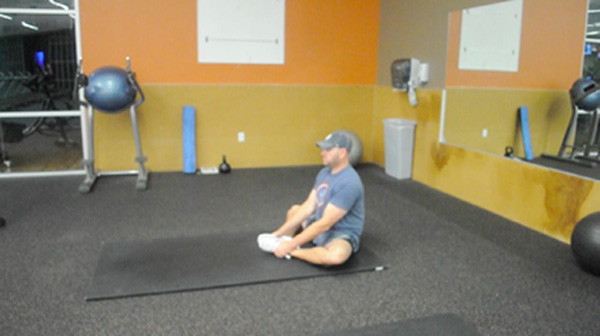
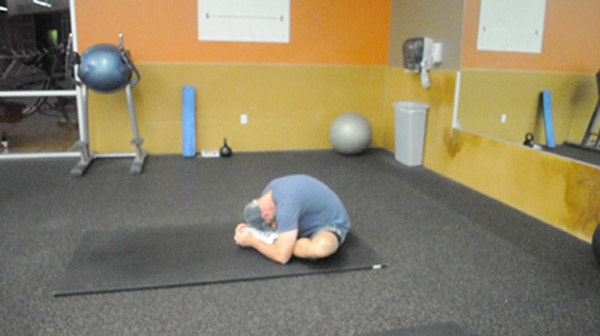

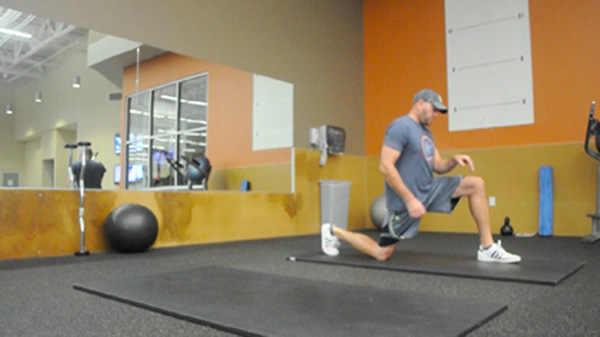
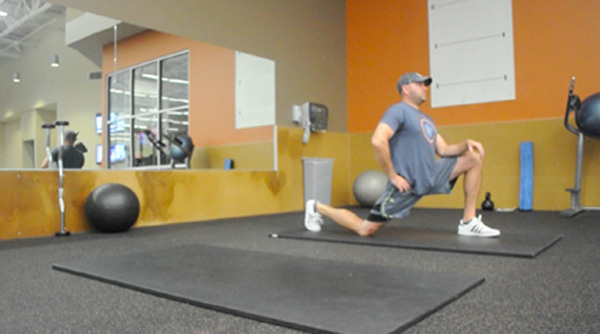
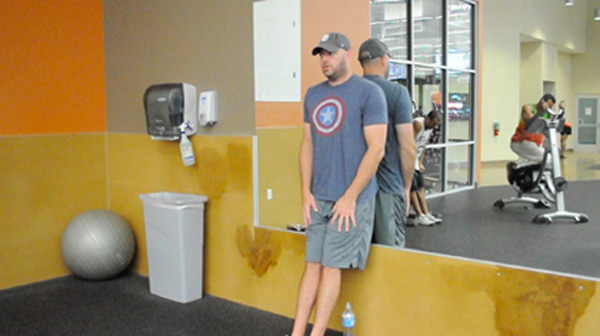
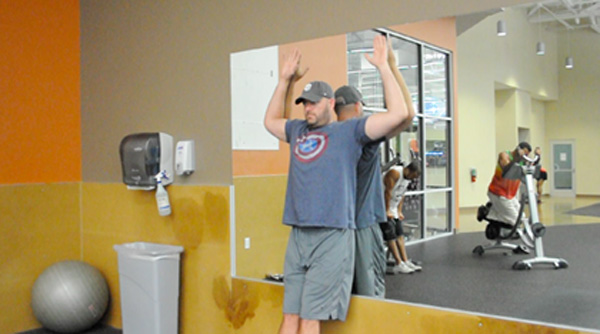
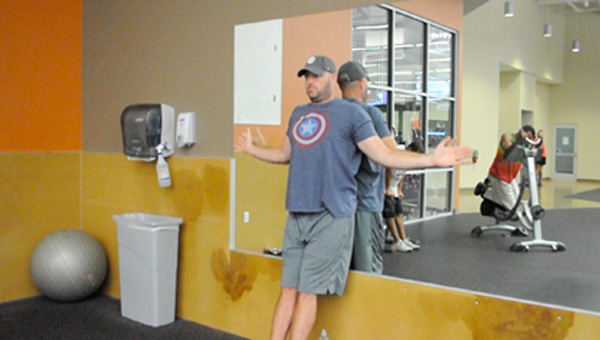
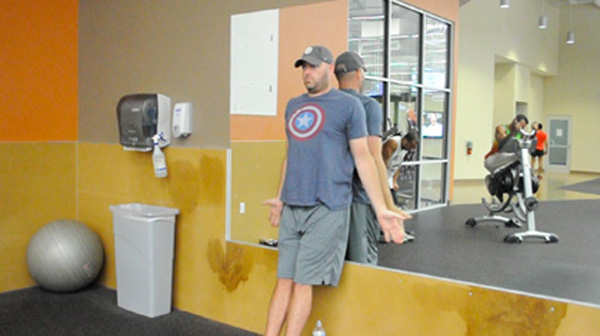















Vincent Frigon
Oct 22, 2013 at 11:59 am
Finally !! I’ve been searching around for that kind of exercises for a while now, since I know I got lower back problems from my golf and having to drive a lot for my job I knew it was a problem of tight muscles in my hips (illiacus) but nobody I was asking had real exercises to fix this. Will defenitely give it a try for the next couple of months ! A Strenght training to complete that article would be awesome !
Thanks !
callmehandsum
Oct 11, 2013 at 10:57 am
I’m short, 5’6″, and stiff, but fairly young (31). I cannot perform the Backswing Angel correctly due to my stiffness. I can’t keep my wrists flat against the wall throughtout the exercise. Should it be my goal to eventually be able to keep my wrists flat or just to do the best that I can?
tiger168
Oct 11, 2013 at 3:57 pm
Answer: Bikram YOGA!!!
PeavyDPT
Oct 11, 2013 at 8:56 pm
These exercises more often than not will be beneficial to most populations as they target muscle groups that are prone to decreased length/tightness. Kudos to Christian for hitting these muscle groups that are so susceptible to tightening up. I especially like the downward dog stretch as it targets the latissimus dorsi which ties the lumbar spine through its attachment to the thoracolumbar fascia to the shoulder complex. The muscle can limit shoulder external rotation and flexion (required of the full golf swing).
Moreover, as positive as these are; they are general. I’m biased, but would highly recommend seeing a physio or physical therapist that can perform a thorough examination of your muscles and joints and give you a customized stretching program and/or provide joint mobilization/manipulation to restricted joints. After all everybody has a different body type and different tendencies throughout their mobility in a day both functionally and recreationally.
Thanks for the post Christian, will be sure to try these after my round Sunday and recommend to some of my patients/clients next week.
Christian Henning
Oct 22, 2013 at 9:05 am
Yes, it’s just going to take time. Try to get a little more flat each day. You can also try this laying on the floor. Lying on the floor is a bit easier.